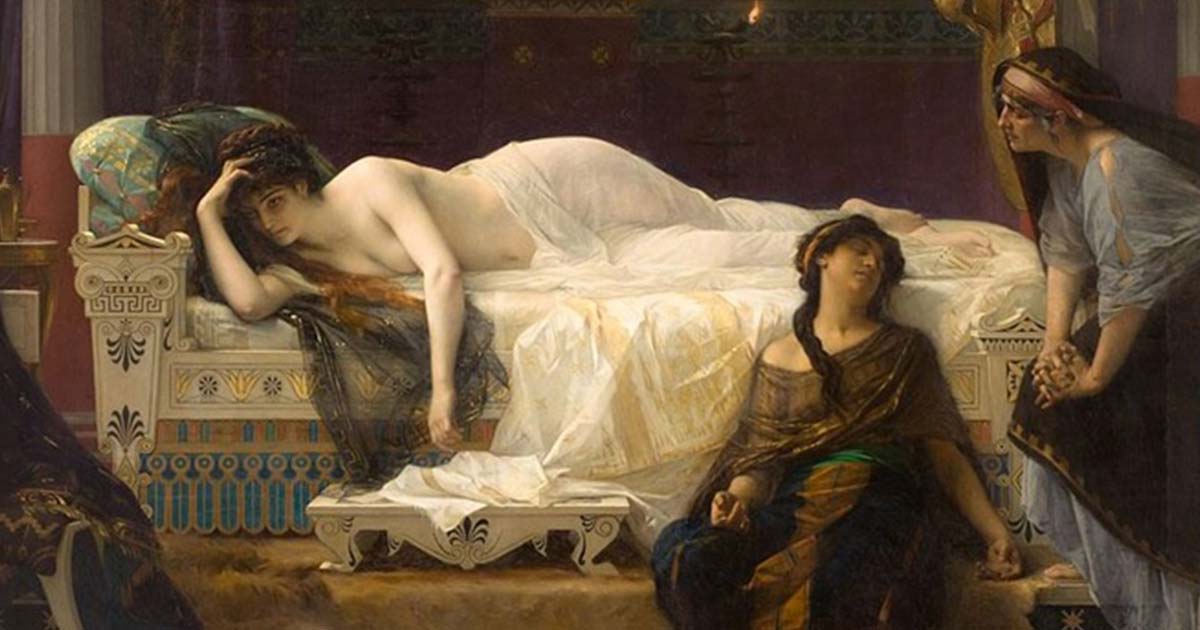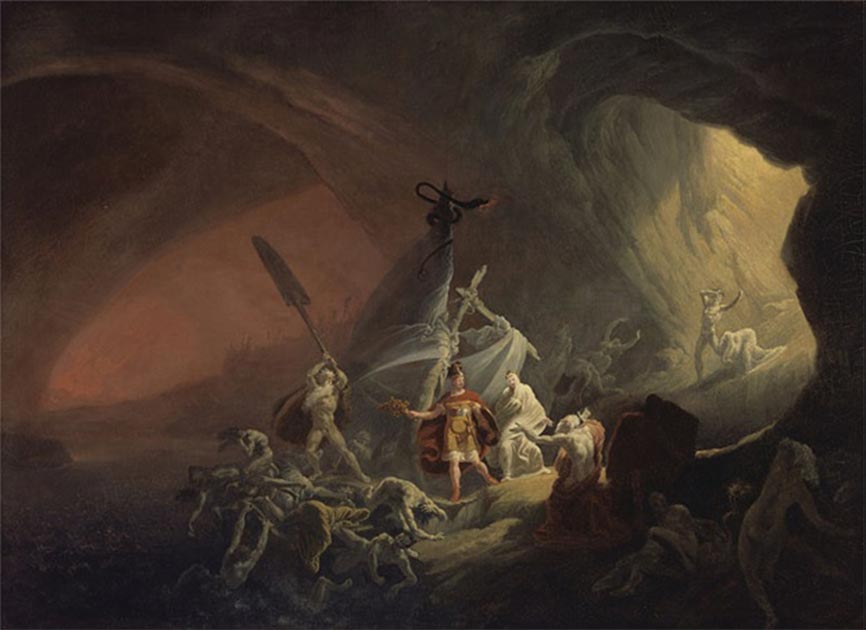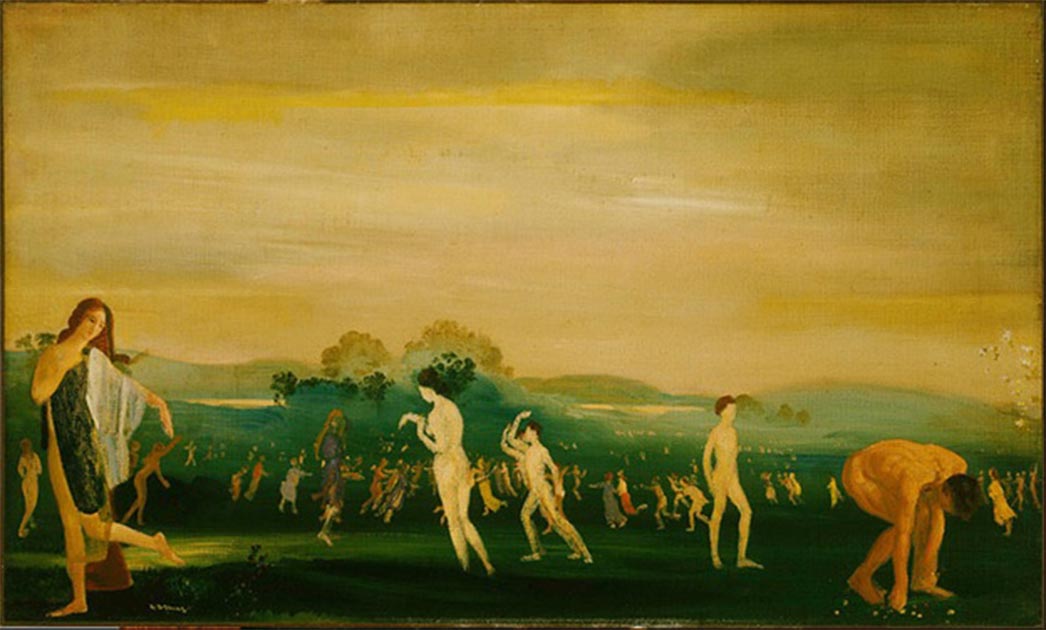
Fields of Mourning, Where Grieving Love-Sick Women Retire
Hidden deep within the bowels of the earth and ruled by the god Hades and his wife Persephone, the ancient Greek Underworld was the kingdom of the dead, the sunless, cold and shadowy place where the souls of those who died went after death. The Underworld was watered by the streams of five infernal rivers - The Styx, the river of hatred and unbreakable oaths; the Acheron, the deep river of sorrow and pain; the Cocytus, the river of lamentation and wailing; the Phlegethon, the river of fire which led to the very depths of Tartarus; and the Lethe, the river of oblivion and forgetfulness, out of which the dead souls are obliged to drink to forget their previous lives on earth in preparation for a possible reincarnation.

Aeneas and the Sibyl in the Underworld (circa 1800) Yale Center for British Art (Public Domain)
For most of the ancient Greeks, the Underworld would not have been viewed as a particularly pleasant place. Ancient authors described the Underworld as nothing more than a joyless realm where the dead would slowly fade into nothingness or, as one learns from Plato’s Myth of Er, prepare themselves for a reincarnation back to earth. However, it is also known that the Underworld was divided into four different regions.
Arguably the most famous part of the Underworld was the Tartarus. In Homer’s Iliad, Zeus described Tartarus as “the deepest gulf beneath the earth” and “as far beneath Hades as heaven is above earth”. It serves as the dungeon of the rebels against the divine order such as the Cyclopes, the Hecatoncheires and the Titans. It also houses the worst of perpetrators destined to endure eternal punishments fitting their crimes such as Sisyphus and Ixion. In contrast, the Elysian Fields, or the Elysium, was a land of eternal sunlight and rosy meadows where only the most exceptional mortals were privileged to an existence free of pain and hard labor.

Elysian Fields by Arthur Bowen Davies (1862–1928) Phillips Collection (Public Domain)
Somewhat less well-known is the Asphodel Meadows. The Odyssey, Book 11, provides this description: “the ghost of clean-heeled Achilles marched away with long steps over the meadow of Asphodel.” Apart from it being the place where Odysseus meets the shade of Achilles in Homer’s Odyssey, and Achilles sorrowfully tells Odysseus that he “would rather be a paid servant in a poor man's house and be above ground than king of kings among the dead”, Book 24 says that the souls of the dead, “came to the Meadow of Asphodel where abide the souls and phantoms of those whose work is done.”
Finally, the last of the four regions of the Underworld is the Fields of Mourning, which are reserved for the souls of those who died of a broken heart. Those souls “wander in paths unseen, or in the gloom of dark myrtle grove: not even in death have they forgot their griefs of long ago” (Aeneid, Book 6, line 426). Some of the most famous inhabitants of the Fields of Mourning are Dido, Phaedra, Procris and Laodamia.





